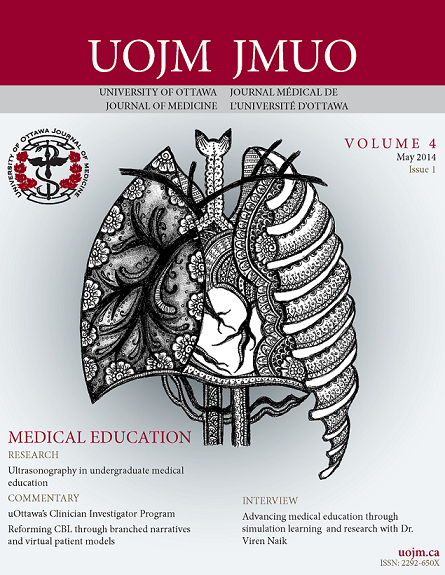Dying young: Excess morbidity and mortality in individuals with severe mental illness and what we should be doing about it
DOI:
https://doi.org/10.18192/uojm.v4i1.1039Keywords:
severe mental illness, mental disorders, premature mortality, morbidity, early death, comorbidity, prevention, primary care, psychiatry, health advocacyAbstract
“We talk about people with mental illness, and people with diabetes, and smokers and the obese, and so on and so on. We’re talking about the same people – just with different labels.”– Health care professional [1, p. 6]Severe mental illness (SMI) most commonly refers to mental disorders with a psychotic component and significantly reduced functioning despite the presence of inherent differences in risk factors, etiologies, and treatments [1]. The most common disorders that fall under this term include schizophrenia and bipolar disorder [1]. Over a decade of research into the morbidity and mortality of individuals with SMI has consistently revealed mortality rates two to three times higher and a life expectancy of 25-30 years shorter compared to the general population [1-4]. Contrary to popular belief, the main causes of early death are not drug overdose or suicide, but rather, preventable illnesses such as cardiovascular disease, diabetes, and HIV/AIDS [1,3,5-7]. Incidence of other preventable conditions, such as obesity and respiratory disease, is also much higher among patients with SMI, and when present, is associated with a more severe course of mental illness and a reduced quality of life [3,8]. Such findings bring significant questions: what is the cause of this disparity in mortality/ morbidity? What can health care professionals do to help reduce this gap?
A recent report by the Early Onset Illness and Mortality Working Group [1] outlines several factors that may contribute to poor physical health of people with SMI. Some factors, such as those related to the mental illness itself (e.g., cognitive impairment, a lack of communication skills, medication side-effects) and socioeconomic status (e.g., poverty, poor education) may be less amenable to modification, but should nevertheless be a target for action. Other contributing factors include behaviour and lifestyle (e.g., physical inactivity, obesity, tobacco smoking), and poor preventative medical care (e.g., disparity in quality of medical care), both of which are more easily modifiable with the assistance of medical care practitioners. Here we will summarize the factors responsible for poor physical health in SMI, specifically focusing on the mental illness itself, socioeconomic status, behaviour and lifestyle, health care system barriers, and insufficient preventative medical care. We will then propose future directions and ways in which medical students and current medical professionals can help reduce this gap.
Downloads
Published
Issue
Section
License
- Authors publishing in the UOJM retain copyright of their articles, including all the drafts and the final published version in the journal.
- While UOJM does not retain any rights to the articles submitted, by agreeing to publish in UOJM, authors are granting the journal right of first publication and distribution rights of their articles.
- Authors are free to submit their works to other publications, including journals, institutional repositories or books, with an acknowledgment of its initial publication in UOJM.
- Copies of UOJM are distributed both in print and online, and all materials will be publicly available online. The journal holds no legal responsibility as to how these materials will be used by the public.
- Please ensure that all authors, co-authors and investigators have read and agree to these terms.
- Works are licensed under a Creative Commons Attribution-NonCommercial-NoDerivatives 4.0 International License.


